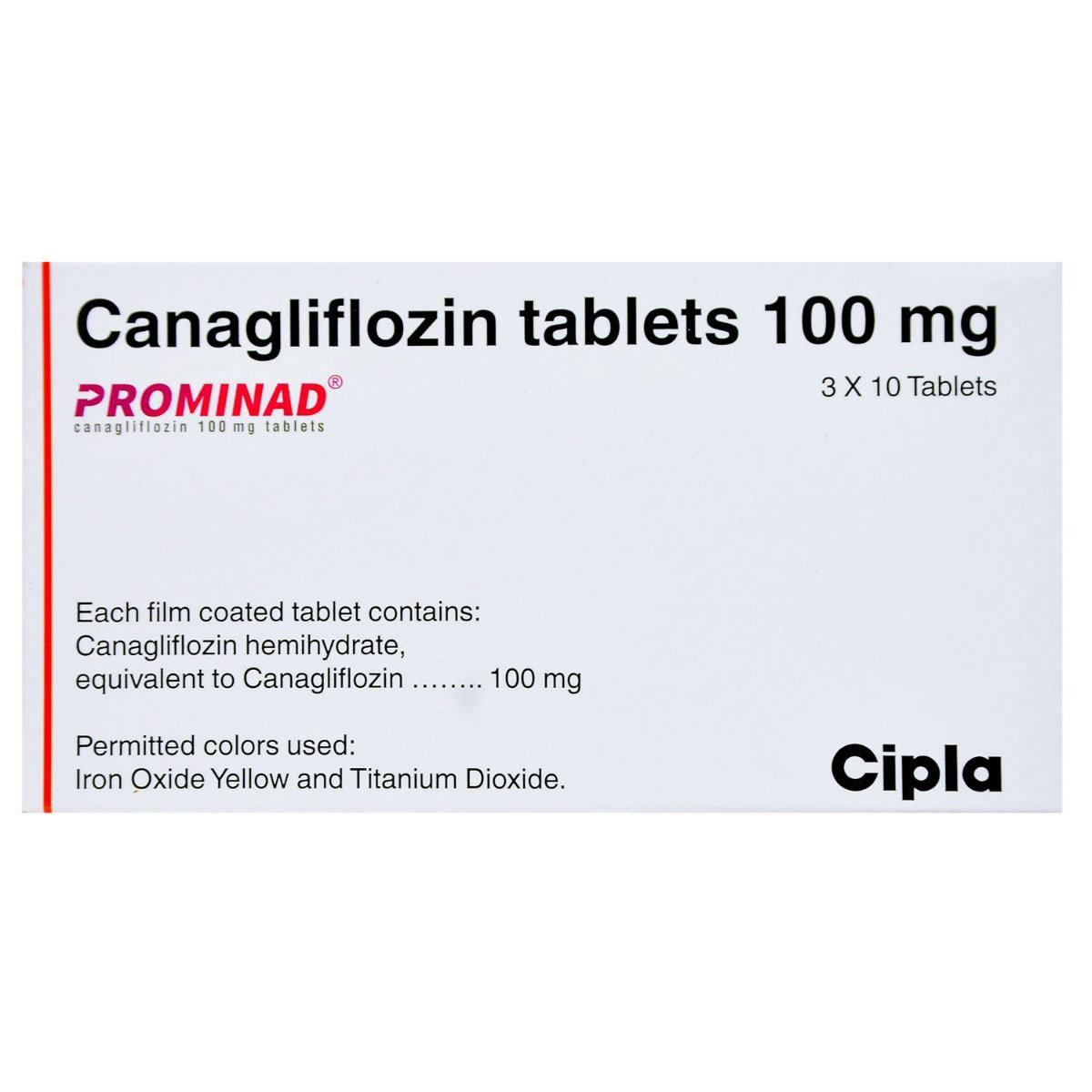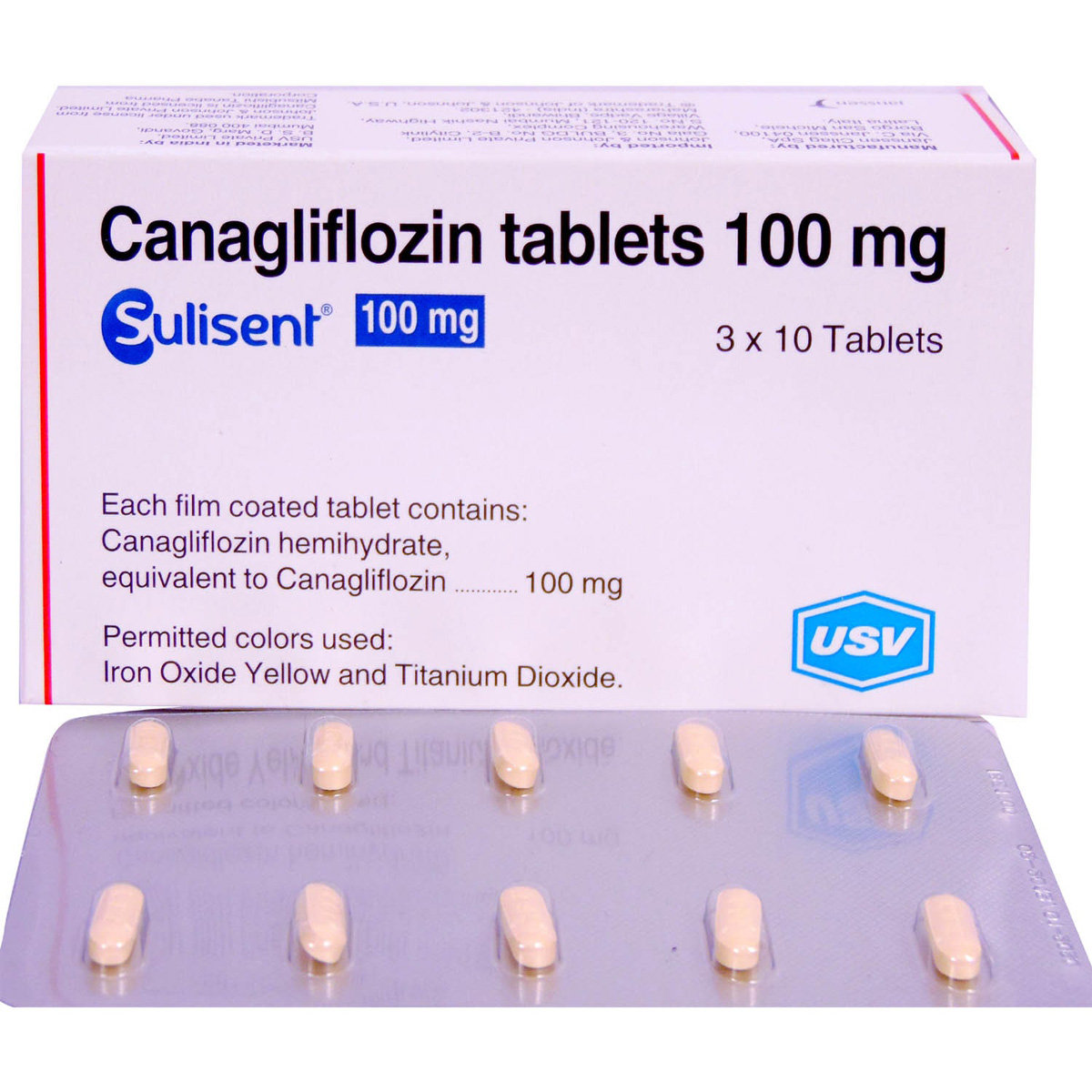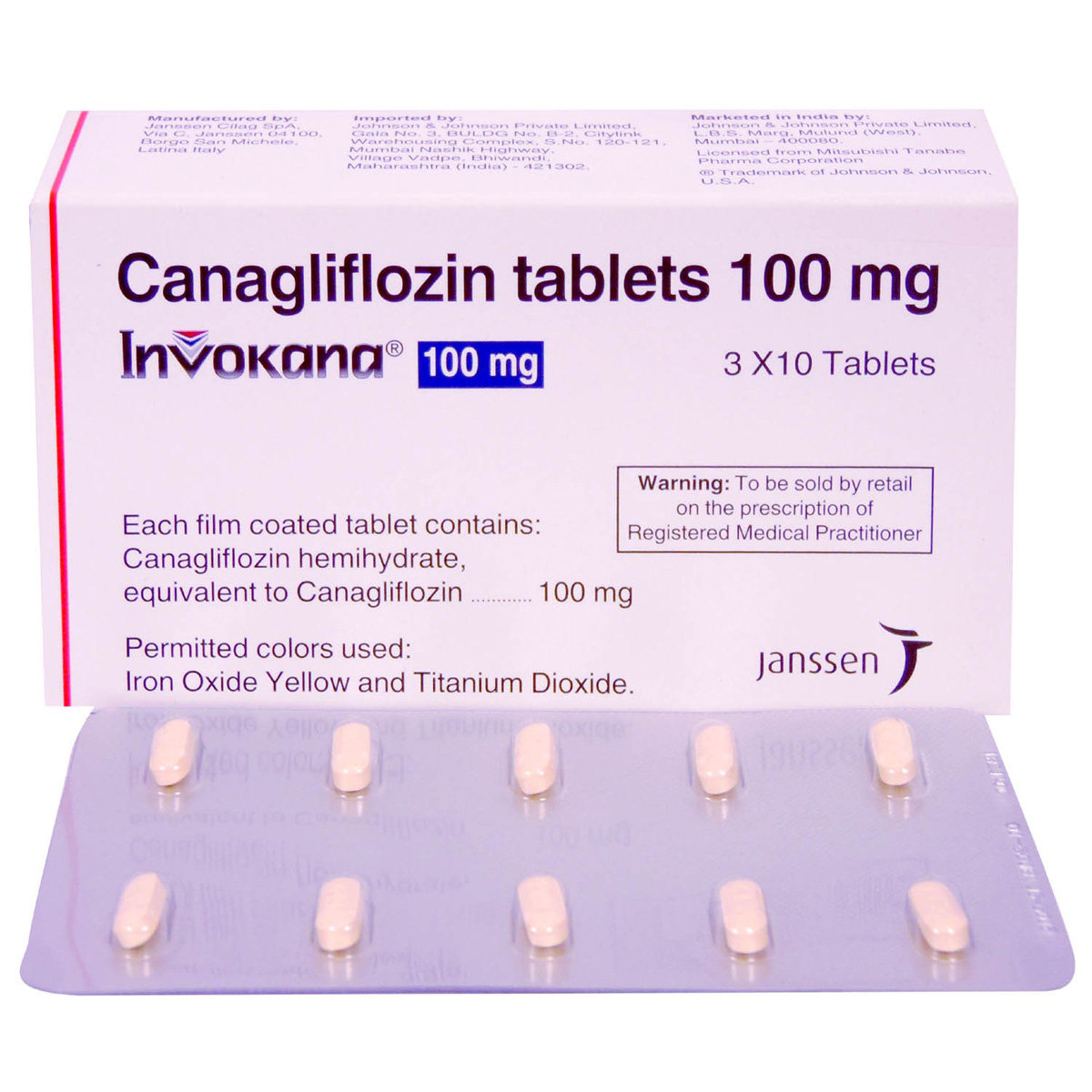Canagliflozin 100 Tablet 10's
MRP ₹609
(Inclusive of all Taxes)
₹91.3 Cashback (15%)
Provide Delivery Location
Online payment accepted
 Prescription drug
Prescription drugWhats That
Composition :
Manufacturer/Marketer :
Consume Type :
Return Policy :
About Canagliflozin 100 Tablet 10's
Canagliflozin 100 Tablet 10's belongs to the category of medicines called 'anti-diabetic' primarily used for managing and treating type 2 diabetes, especially in persons whose sugar levels are too high and cannot be controlled only by dieting and exercising. Type 2 diabetes is a condition that occurs when there is either less insulin or available insulin is not properly utilized by our body cells for lowering raised blood glucose. It is the most common type of diabetes, accounting for around 90% of diabetes cases found commonly in middle-aged people. So it is also called adult-onset diabetes or non-insulin-dependent diabetes mellitus (NIDDM).
Canagliflozin 100 Tablet 10's contains “Canagliflozin” is a sodium-glucose cotransporters-2 (SGLT-2) (a protein present in the kidney) inhibitor that works by inhibiting the reabsorption of glucose in the body, resulting in an increase in glucose excretion through urine. The removal of excessive glucose helps to lower the blood sugar level. Additionally, it also lowers high blood pressure, due to increased diuretic effect (water loss) and reduced body weight due to a reduction in glucose availability.
Take Canagliflozin 100 Tablet 10's as prescribed. Your doctor will advise you how often you take Canagliflozin 100 Tablet 10's based on your medical condition. In some cases, you may experience urinary tract infections, changes in urination (including urinating more frequently or in larger amounts, urgent need to urinate, need to urinate at night), constipation, feeling thirsty, nausea, dizziness, and nausea. Most of these side effects of Canagliflozin 100 Tablet 10's do not require medical attention and gradually resolve over time. However, if the side effects are persistent, reach out to your doctor.
Before starting Canagliflozin 100 Tablet 10's, let your doctor know if you are pregnant or planning to get pregnant, or breastfeeding. And also, tell the doctor if you have/had any medical history of heart, liver, or kidney diseases. Inform your doctor about all the medicine you are taking and your health condition to rule out any unpleasant side effects. Canagliflozin 100 Tablet 10's works best when coupled with a healthy lifestyle like losing weight if you are overweight (BMI>25), eating fewer calories (low fat and sugary food), and being more physically active (at least 150min of activity every week).
Uses of Canagliflozin 100 Tablet 10's
Directions for Use
Key Benefits
Canagliflozin 100 Tablet 10's belongs to the group of medicines called “anti-diabetic” indicated in the treatment of type 2 diabetes or non-insulin-dependent diabetes (NIDDM). This medicine is primarily prescribed to persons with high blood sugar levels and is not controlled by diet and exercise alone. Canagliflozin 100 Tablet 10's consists of “Canagliflozin” is a sodium-glucose cotransporter-2 (SGLT-2) inhibitor responsible for the inhibition of SGLT-2 enzymes in the kidney. It prevents the reabsorption of glucose from the blood filtered through your kidney, thereby increasing the glucose excretion from your body when you pee. In some cases, Canagliflozin 100 Tablet 10's can cause weight loss in diabetic persons by increasing the excretion of excess sugar through urination when you pee.
Storage
Drug Warnings
Canagliflozin 100 Tablet 10's should not be used in patients with type 1 diabetes or diabetic ketoacidosis. Before you start taking Canagliflozin 100 Tablet 10's, tell your doctor if you have serious heart disease or if you have had a stroke, low blood pressure (hypotension), and severe liver or kidney disease. Canagliflozin 100 Tablet 10's, when used with insulin, $ name may lower the blood sugar level, leading to hypoglycemia, which can be fatal. Your doctor may adjust the dose by lowering the dose of insulin or Canagliflozin 100 Tablet 10's in this case. If you experience rapid weight loss, feeling sick or being sick, stomach pain, excessive thirst, fast and deep breathing, confusion, unusual sleepiness or tiredness, a sweet smell to your breath, a sweet or metallic taste in your mouth, or a different odour to your urine or sweat, talk to a doctor or go to the nearest hospital immediately.
Diet & Lifestyle Advise
- A person should engage themself in regular exercise like cycling, running, walking, jogging, dancing, or swimming for at least 30 minutes. Try to invest at least 150 minutes weekly in exercise.
- A person should also maintain a healthy body weight to avoid obesity or high blood sugar; it can increase the risk of the onset of diabetes.
- A person should take low fat and a low sugar diet. For that, replace carbohydrates with whole grains, fruits, and vegetables as carbohydrates changed into sugars leading to high blood sugar levels.
- Try to avoid potatoes as they are high glycaemic foods that increase the risk of high sugar in the blood.
- A person should limit the consumption of alcohol and quit smoking.
- Keep your blood pressure as normal (120/80) as possible, as it reduces the risk of cardiovascular diseases in diabetes patients.
- Do not take stress as it may elevate your blood sugar level. You can adopt stress management techniques like mindfulness to control stress-related blood sugar changes.
Side Effects of Canagliflozin 100 Tablet 10's
- Urinary tract infections
- Changes in urination (including urinating more frequently or in larger amounts, urgent need to urinate, need to urinate at night)
- Constipation
- Feeling thirsty
- Nausea
- Blood tests may show changes in blood fat (cholesterol) levels
- Increases in the number of red blood cells in your blood
Habit Forming
Therapeutic Class
All Substitutes & Brand Comparisons
RX
Prominad Tablet 10's
Cipla Ltd
₹556.5
(₹48.97 per unit)
19% CHEAPERRX
Sulisent 100 mg Tablet 10's
USV Pvt Ltd
₹611
(₹53.77 per unit)
11% CHEAPERRX
Invokana 100 mg Tablet 10's
Johnson & Johnson Pvt Ltd
₹553
(₹55.3 per unit)
9% CHEAPER
Author Details
We provide you with authentic, trustworthy and relevant information
FAQs
Drug-Drug Interactions Checker List
- GLIMEPIRIDE
- GLIPIZIDE
- FUROSEMIDE
- CARBAMAZEPINE
- PHENYTOIN
- PHENOBARBITAL
- EFAVIRENZ
- RITONAVIR
- RIFAMPICIN
- CHOLESTYRAMINE
- DABIGATRAN
- DIGOXIN
Special Advise
You should have a test of glycated haemoglobin (HbA1C) every 3 months to check your blood glucose level control.
Disease/Condition Glossary
Type 2 diabetes: It is a chronic or lifelong condition in which the body's cells fail to respond to insulin and, in later stages, the body fails to produce enough insulin. It accounts for roughly 90% of all diabetes cases. Because of this condition, the body must rely on various energy sources in muscles, tissues, and organs. Early symptoms of this disease include constant hunger, lack of energy, fatigue, weight loss, excessive thirst, frequent urination, dry mouth, itchy skin, and blurry vision. Type 2 diabetes, also known as adult-onset diabetes, is most common in people in their forties and fifties. The risks of uncontrolled type 2 diabetes include retinal damage or blindness, limb loss, nerve problems, kidney problems, sexual dysfunction, and an increased risk of heart attack or stroke.

Have a query?
Alcohol
Safe if prescribed
You should avoid consuming alcohol with Canagliflozin 100 Tablet 10's as it may alter your blood sugar levels or lead to serious side effects.
Pregnancy
Consult your doctor
No sufficient data are available on the use of Canagliflozin 100 Tablet 10's in pregnancy. Canagliflozin 100 Tablet 10's is a Category C pregnancy drug that is not recommended for use in pregnancy. Hence, consult your doctor before taking this medicine.
Breast Feeding
Consult your doctor
There is no sufficient data on how Canagliflozin 100 Tablet 10's affects breastfeeding. It is safe to seek medical advice before you start Canagliflozin 100 Tablet 10's if you are breastfeeding.
Driving
Safe if prescribed
Canagliflozin 100 Tablet 10's is safe to take before driving as it does not affect your thinking ability. Do not drive or operate machinery if you experience dizziness or drowsiness.
Liver
Consult your doctor
If you have liver disease or a history of liver impairment, consult your doctor before taking Canagliflozin 100 Tablet 10's. Your doctor may adjust the dose or prescribe a suitable alternative based on your condition.
Kidney
Consult your doctor
If you have kidney disease or a history of kidney impairment, consult your doctor before taking Canagliflozin 100 Tablet 10's. Your doctor may adjust the dose or prescribe a suitable alternative based on your condition.
Children
Safe if prescribed
Canagliflozin 100 Tablet 10's is not recommended for children below 18 years of age, as the safety and effectiveness were not established.










